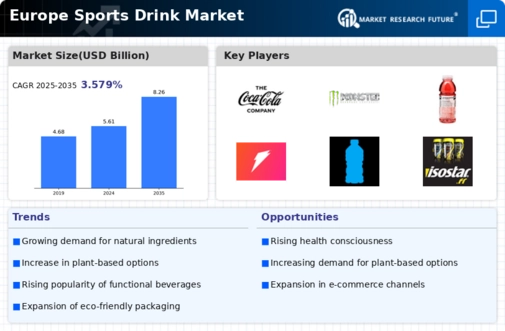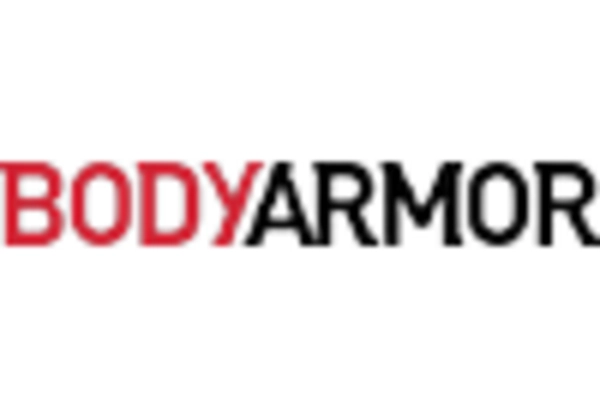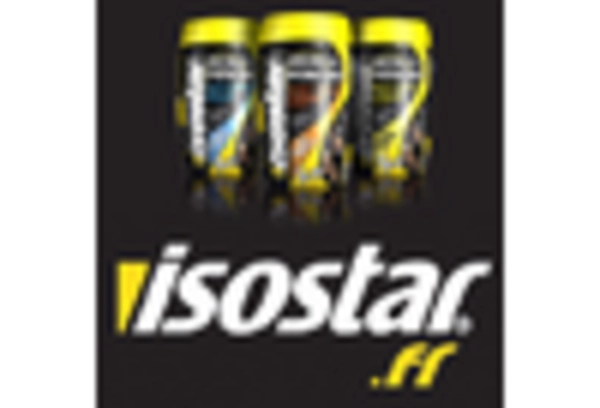Rising Health Consciousness
The increasing awareness of health and fitness among consumers is a pivotal driver for the sports drink market in Europe. As individuals become more health-conscious, they actively seek beverages that support their active lifestyles. This trend is reflected in the growing demand for low-calorie and functional drinks, which are perceived as beneficial for hydration and recovery. According to recent data, the market for sports drinks in Europe is projected to grow at a CAGR of approximately 6.5% over the next five years. This growth is likely fueled by the rising participation in sports and fitness activities, as well as the increasing prevalence of health-related information through social media and other platforms. Consequently, brands are innovating to offer products that align with these health trends, thereby enhancing their appeal in the sports drink market.
Evolving Consumer Preferences
Consumer preferences are rapidly evolving, influencing the dynamics of the sports drink market in Europe. There is a noticeable shift towards natural and organic ingredients, as consumers become more discerning about what they consume. This trend is prompting brands to reformulate their products to eliminate artificial additives and sugars, thereby appealing to a broader audience. Additionally, the demand for functional beverages that offer specific health benefits, such as improved hydration and energy, is on the rise. The sports drink market is adapting to these changing preferences by introducing innovative flavors and formulations that cater to diverse consumer tastes. This evolution in consumer behavior is likely to drive market growth, as brands strive to meet the expectations of a more health-conscious and ingredient-savvy consumer base.
Increased Participation in Sports Activities
The surge in participation in various sports and fitness activities is a significant driver for the sports drink market in Europe. As more individuals engage in recreational and competitive sports, the demand for hydration solutions that support performance and recovery is on the rise. This trend is particularly evident among younger demographics, who are increasingly prioritizing fitness as part of their lifestyle. Data indicates that approximately 40% of Europeans regularly participate in sports, which correlates with the growing consumption of sports drinks. The sports drink market is thus benefiting from this active lifestyle trend, as consumers seek products that enhance their athletic performance and overall well-being. Brands are responding by developing targeted marketing campaigns that resonate with this active audience, further propelling market growth.
Growing Influence of Social Media and Marketing
The impact of social media and digital marketing strategies is increasingly shaping the sports drink market in Europe. Brands are leveraging platforms like Instagram and Facebook to engage with consumers, promote their products, and build brand loyalty. Influencer marketing has emerged as a powerful tool, with fitness enthusiasts and athletes endorsing specific brands, thereby influencing consumer purchasing decisions. This trend is particularly relevant among younger consumers, who are more likely to trust recommendations from social media personalities. The sports drink market is witnessing a shift in marketing strategies, focusing on creating authentic connections with consumers through engaging content and community-building initiatives. As a result, brands that effectively utilize social media are likely to gain a competitive edge, driving growth in the market.
Technological Advancements in Product Development
Technological innovations play a crucial role in shaping the sports drink market in Europe. Advances in food science and technology enable manufacturers to create enhanced formulations that cater to specific consumer needs, such as improved hydration, energy replenishment, and recovery. For instance, the incorporation of electrolytes, vitamins, and natural ingredients has become more prevalent, appealing to health-conscious consumers. Furthermore, the use of smart packaging and digital marketing strategies allows brands to engage with consumers more effectively. The sports drink market is witnessing a shift towards personalized nutrition, where products are tailored to individual preferences and performance requirements. This trend is expected to drive market growth, as consumers increasingly seek products that offer functional benefits and align with their fitness goals.

















Leave a Comment